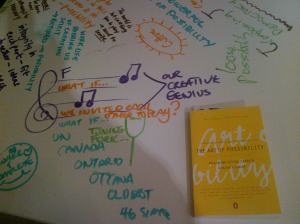
It lurks, waiting for the unsuspecting communicator. Its disguise, the quick and easy transition of words or documents from one place to another. Yet it has an insidious power that can transform grown men into small-minded bullies or professional women into petty tyrants. Yes, I’m talking about e-mail. If we’re totally honest with ourselves, we would see email for what it really is, a supervillain. I’ve seen the horror it can do.
I’ve run down a hallway shouting to colleagues to, “STOP SENDING E-MAILS” when a chain of emails with some of our stakeholders across the country escalated into war. It’s not that I don’t enjoy a good joke and really, email fights are always funny in retrospect. It is just that when you make your living building relationships, you don’t have much humour about watching years of cultivation, goodwill and hard work go up in flames because of a few poorly worded emails. It’s not just your external stakeholders who can be affected by it either. Internal emails are probably among the most prolific contributors to poor morale.
A poorly worded or too widely sent email can spiral a team into chaos. I’ve coached managers on what to say to chronic email abusers and I’ve had to soothe frustrated team members when someone showed disrespect to them in an email. There is also the abusive reply all function. Imagine the chain of events that unfolds when thousands of people receive a shrill email questioning management on a decision that impacted the whole organization. I still wake up screaming.
Or there is the unjustified anger that follows when someone sends an email with directions and subsequently does not get the behaviour they want. If I hear one more time, “But I sent them an email!” I may get dangerous. For the record:
- Sending does not mean people received it.
- Receiving it doesn’t mean they read it.
- Reading it doesn’t mean they understood it.
There are protocols associated with email use that is a Google search away, so I won’t belabour the point here, but keep these lessons in mind.
Lessons Learned
- Read it out loud, if it sounds obnoxious, it is. Don’t send it.
- A smiley face after being obnoxious doesn’t make the email less obnoxious.
- How many people really need to see your message? Do the math and don’t add anyone else.
- If you’re getting angry, stop emailing, pick up the phone or walk down the hall.
- If it’s urgent, important or a risk issue, don’t email, pick up the phone or walk down the hall.
- E-mail is a temporary short-cut for sharing information, not a substitute for good communications or good relationship management.
Have any e-mail nightmares to share? Do you LOVE email or are you a careful user?


